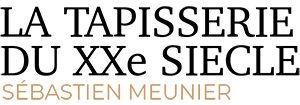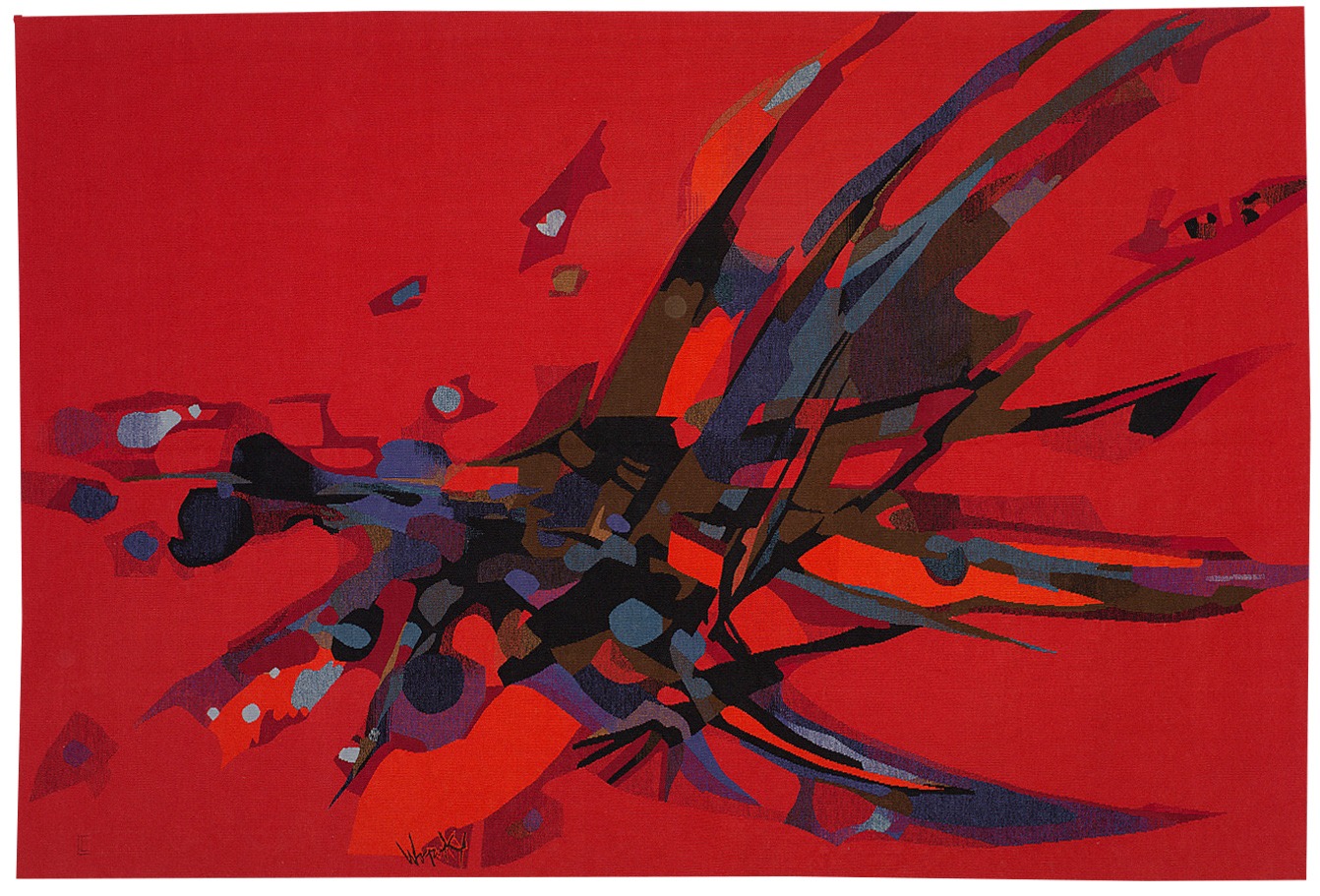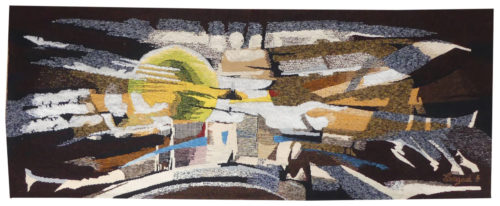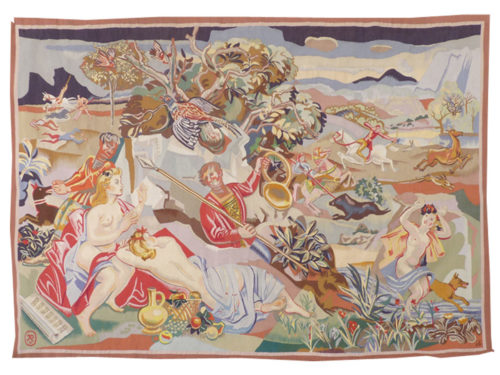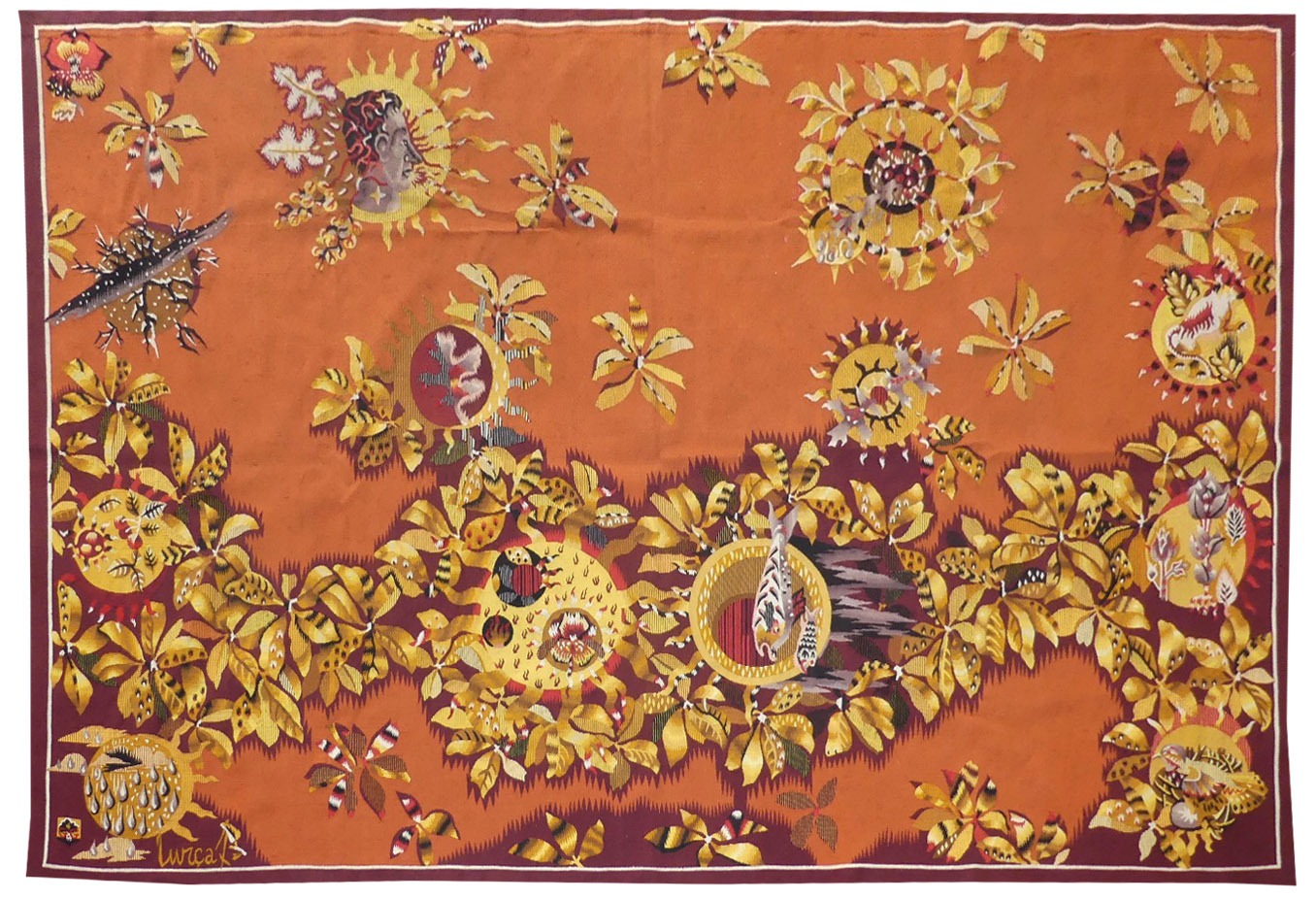Oiseau de Midi (bright birds)
Aubusson tapestry woven by the Legoueix workshop.
With signed label, n°EA.
1969.
Wogensky met Lurçat as early as 1939, but he only entered into collaboration with him after the war, designing his first cartoon in 1945 (already titled « les oiseaux » (the birds)) and soon after joined the A.P.C.T. (Association des Peintres-Cartonniers de Tapisserie). A teacher of mural art at the Ecole Nationale Supérieure des Arts Appliqués in Paris, Wogensky designed 159 cartoons up until the 1980’s, most of them woven by Legoueix. “Wool is like us in that it is warm-blooded. It is comforting and reassuring. A wall of wool, is a living, more human wall” (quoted in Robert Guinot “la Tapisserie d’Aubusson et de Felletin”, Lucien Souny, 2009). This is the artist’s credo which would invigorate his creativity, finding expression in lyrical flights (literally, as ornithological themes, often highly stylised, were among his favourites. Some cartoons, particularly at the end of the 1970’s are resolutely abstract), in cartoons inspired by “Natural History” (a title he gave to one of his works in 1961), or in cosmic themes, using constellations or other natural elements. “I always took pleasure in working on a large scale” as he also confided in Robert Guinot.
If this cartoon appears modest in comparison with other official commissions created by Wogensky (University of Strasbourg, the Senate conference hall...) its subject allows for an impression of spatial expansion, via the elan of the elliptic bird-like motifs, energized by the chromatic flattening effect of the bright red background.
Bibliography :
Cat. Expo. 25 ans de tapisserie française 1944, Paris, manufacture des Gobelins, 1969, n°33
Exhibition Catalogue La Tapisserie et l’Espace, Châteauroux, couvent des Cordeliers, 1978, n°21
Exhibition catalogue Robert Wogensky, Aubusson, Musée départemental de la tapisserie, 1989, illustrated p.34
Exhibition catalogue Robert Wogensky, Angers, Musée Jean Lurçat et de la Tapisserie Contemporaine, 1989, ill. p.20
